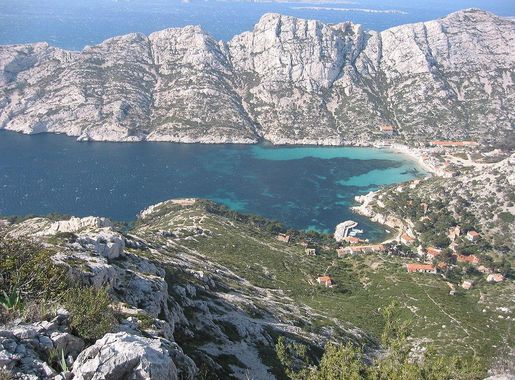
Enchanting Escapades at Les Calanques National Park
Discover the breathtaking beauty of Les Calanques National Park, where limestone cliffs meet turquoise waters, offering a paradise for hikers, swimmers, and nature lovers.
Les Calanques National Park, located between Marseille and Cassis in the south of France, is a captivating haven of natural beauty and outdoor adventure. This stunning coastal park is renowned for its dramatic limestone cliffs, crystal-clear turquoise waters, and hidden coves that create an idyllic landscape for visitors to explore. The park spans over 20 kilometers of rugged coastline and offers a variety of activities for nature lovers, hikers, and water sports enthusiasts. The park's calanques, or steep-walled inlets, are the main attraction, providing breathtaking views and unique geological formations. These inlets are perfect for kayaking, snorkeling, and swimming, offering a serene escape from the hustle and bustle of city life. Hiking trails wind through the park, ranging from easy walks to challenging treks, each offering panoramic vistas of the Mediterranean Sea and the surrounding landscapes. Les Calanques National Park is also rich in biodiversity, home to a wide range of flora and fauna, including rare plant species and various birds. The park's diverse ecosystems make it a paradise for wildlife enthusiasts and photographers. Additionally, the park's historical significance is evident in its ancient ruins and archaeological sites, adding a touch of historical intrigue to your visit. Whether you're seeking adventure, relaxation, or a blend of both, Les Calanques National Park promises an unforgettable experience in one of France's most scenic regions.
Local tips in Les Calanques National Park
- Visit during the shoulder seasons (spring or fall) to avoid the summer crowds and enjoy pleasant weather.
- Wear sturdy hiking shoes and bring plenty of water; the trails can be steep and there are few places to refill your bottle.
- Check the weather forecast and sea conditions if you plan on kayaking or swimming; conditions can change rapidly.
- Respect the park's regulations, including restrictions on fires and camping, to help preserve its natural beauty.
- Consider taking a guided tour to learn about the park's unique geology, flora, and fauna from knowledgeable local guides.
Enchanting Escapades at Les Calanques National Park
Les Calanques National Park, located between Marseille and Cassis in the south of France, is a captivating haven of natural beauty and outdoor adventure. This stunning coastal park is renowned for its dramatic limestone cliffs, crystal-clear turquoise waters, and hidden coves that create an idyllic landscape for visitors to explore. The park spans over 20 kilometers of rugged coastline and offers a variety of activities for nature lovers, hikers, and water sports enthusiasts. The park's calanques, or steep-walled inlets, are the main attraction, providing breathtaking views and unique geological formations. These inlets are perfect for kayaking, snorkeling, and swimming, offering a serene escape from the hustle and bustle of city life. Hiking trails wind through the park, ranging from easy walks to challenging treks, each offering panoramic vistas of the Mediterranean Sea and the surrounding landscapes. Les Calanques National Park is also rich in biodiversity, home to a wide range of flora and fauna, including rare plant species and various birds. The park's diverse ecosystems make it a paradise for wildlife enthusiasts and photographers. Additionally, the park's historical significance is evident in its ancient ruins and archaeological sites, adding a touch of historical intrigue to your visit. Whether you're seeking adventure, relaxation, or a blend of both, Les Calanques National Park promises an unforgettable experience in one of France's most scenic regions.
When is the best time to go to Les Calanques National Park?
Iconic landmarks you can’t miss
Parc national des Calanques
Explore the stunning coastal cliffs, hidden coves, and diverse wildlife of Parc National des Calanques, a must-visit national park near Marseille.
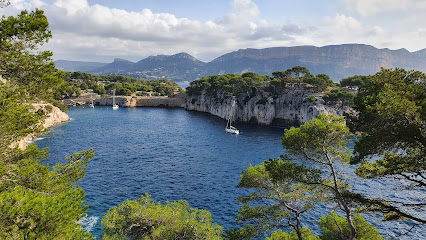
Palais Longchamp
Explore the Palais Longchamp in Marseille: A historical landmark with stunning gardens and impressive museums, perfect for culture lovers and nature enthusiasts alike.
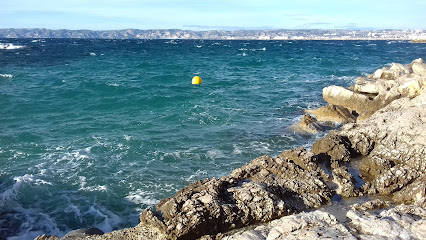
Calanque de Port-Miou
Explore the breathtaking Calanque de Port-Miou, where dramatic cliffs meet crystal-clear waters for an unforgettable outdoor adventure.
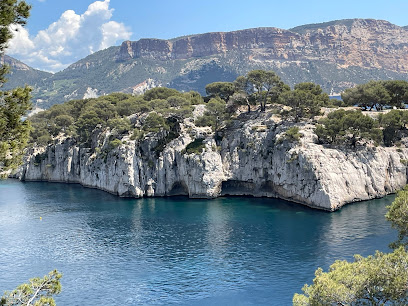
Visit Of Creeks
Discover the breathtaking calanques of Cassis, where stunning cliffs meet azure waters on an unforgettable boat tour experience.
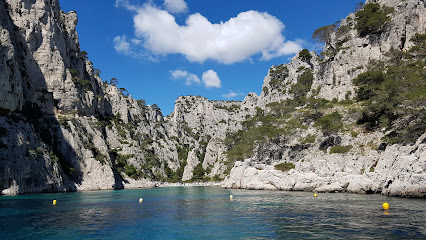
Parc du Mugel
Discover the breathtaking landscapes and vibrant flora at Parc du Mugel, a must-visit botanical garden in La Ciotat, France.
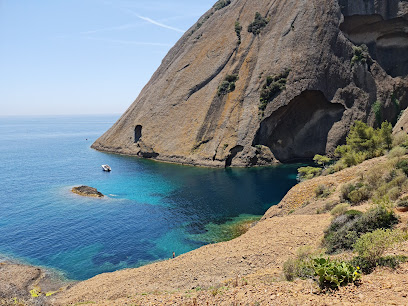
Calanque de Port Pin
Discover the stunning beauty of Calanque de Port Pin, a serene beach retreat in Marseille, perfect for sunbathing, hiking, and outdoor adventures.
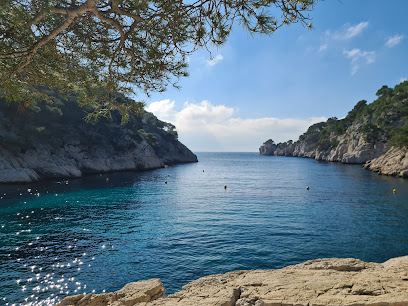
Belvédère de Sugiton
Discover breathtaking panoramic views of the Mediterranean at Belvédère de Sugiton in Calanques National Park, a must-see for nature lovers and photographers.
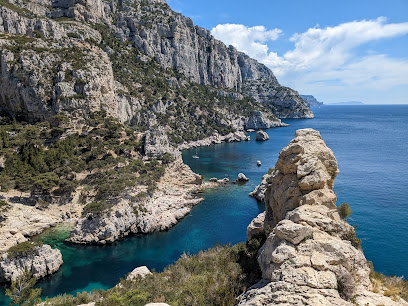
Port Antique
Explore Port Antique, a historical landmark in Marseille, where the past meets the present amidst stunning architecture and vibrant culture.
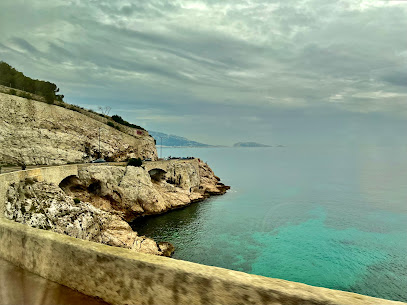
Calanque de Sormiou
Experience the breathtaking beauty of Calanque de Sormiou, a hidden gem in France with stunning cliffs and crystal-clear waters.
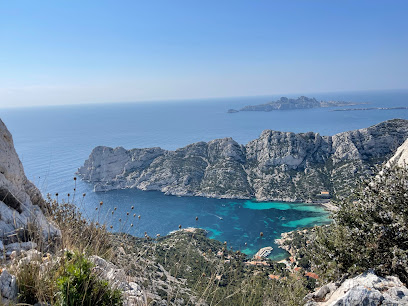
Massif des Calanques
Experience the breathtaking beauty of Massif des Calanques, a stunning coastal park in Marseille known for its cliffs, azure waters, and rich biodiversity.

Calanque d'En-vau
Discover the enchanting beauty of Calanque d'En-vau, a tranquil beach in the heart of Calanques National Park, perfect for relaxation and adventure.
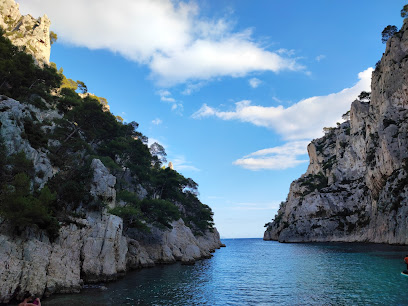
Calanque de Sugiton
Explore the stunning Calanque de Sugiton, a hidden gem in France's Calanques National Park, known for its breathtaking views and crystal-clear waters.
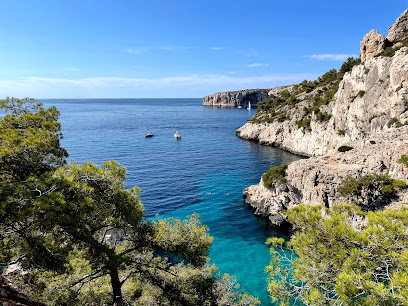
Calanque de la crine
Experience the breathtaking landscapes and tranquil waters of Calanque de la Crine, a hidden gem in the heart of Marseille's coastal paradise.
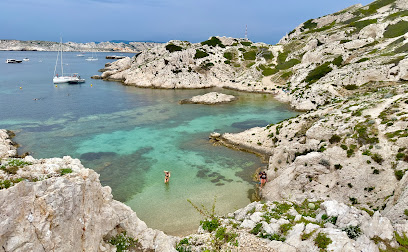
Fort de Ratonneau
Explore the rich history and stunning coastal views at Fort de Ratonneau, a captivating fortress on the island of Ratonneau near Marseille.
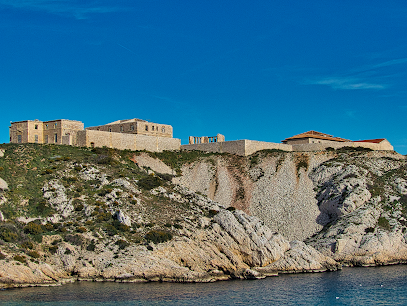
Calanques - Chateau If
Discover the breathtaking beauty of Calanques and the historic Château d'If, a must-visit destination in Marseille for nature lovers and history enthusiasts.
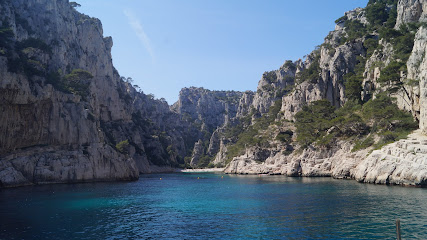
Unmissable attractions to see
Vieux-Port de La Ciotat
Discover the vibrant atmosphere and stunning coastal views at Vieux-Port de La Ciotat, a must-visit marina on the French Riviera.
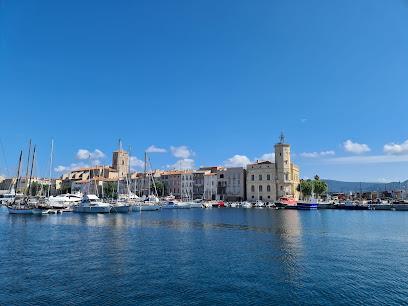
Calanque de Port Pin
Experience the breathtaking beauty of Calanque de Port Pin, a serene beach paradise in the heart of Calanques National Park, perfect for relaxation and adventure.
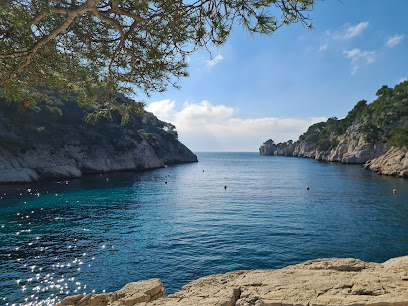
Port of Carry-le-Rouet
Explore the picturesque Port of Carry-le-Rouet, a vibrant marina offering stunning views, delicious cuisine, and a gateway to the Mediterranean's natural beauty.
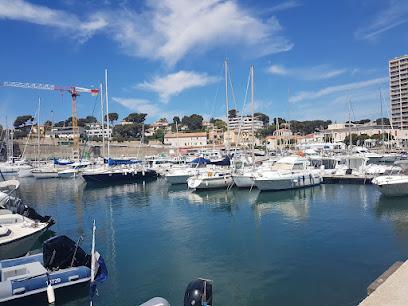
Parc Balnéaire du Prado
Experience the beauty and vibrancy of Parc Balnéaire du Prado, a coastal park in Marseille perfect for relaxation, recreation, and cultural experiences.
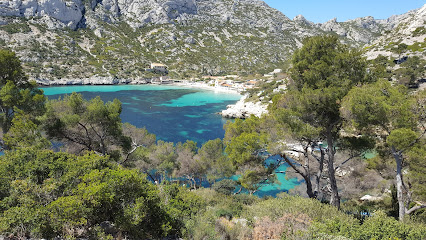
Plage du Bestouan
Experience the beauty of Plage du Bestouan, a captivating public beach in Cassis with golden sands and turquoise waters, perfect for relaxation and adventure.
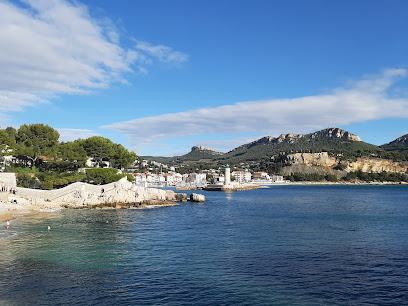
Parc de la Maison Blanche
Experience the beauty and serenity of Parc de la Maison Blanche in Marseille, a perfect destination for relaxation and outdoor activities amidst lush greenery.
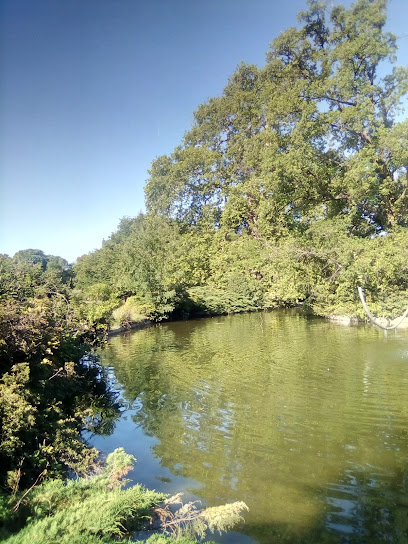
Plage Sauvage de Morgiou
Discover the tranquil beauty of Plage Sauvage de Morgiou, a hidden gem in Marseille's Calanques National Park, perfect for relaxation and adventure.
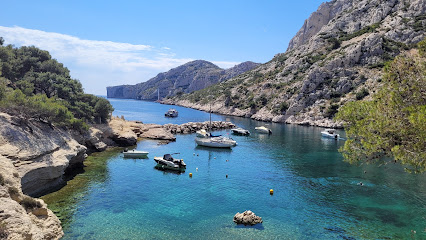
Parc Du Domaine De La Tour
Discover the tranquil beauty of Parc Du Domaine De La Tour in La Ciotat – a serene state park perfect for relaxation and outdoor activities.
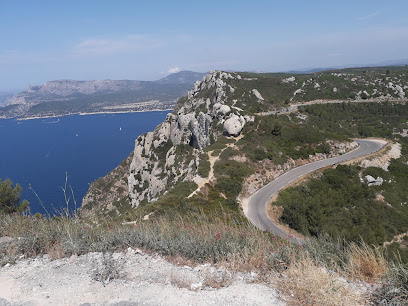
Massif des Calanques
Explore the breathtaking Massif des Calanques in Marseille – a stunning blend of cliffs, azure waters, and diverse wildlife awaits you.

Magalone Garden
Explore Magalone Garden: a serene park in Marseille featuring vibrant flora, peaceful pathways, and perfect spots for relaxation and family fun.
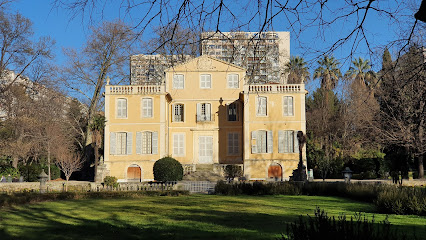
Château Pastré
Discover the beauty and history of Château Pastré, a stunning castle in Marseille surrounded by lush gardens and breathtaking coastal views.
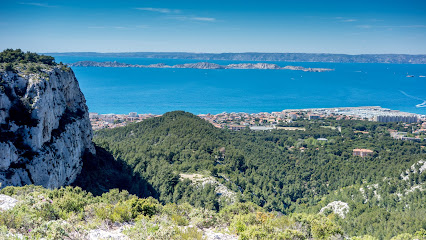
Calanque de la crine
Discover the stunning natural beauty of Calanque de la Crine, a breathtaking coastal haven near Marseille, perfect for adventure and relaxation.
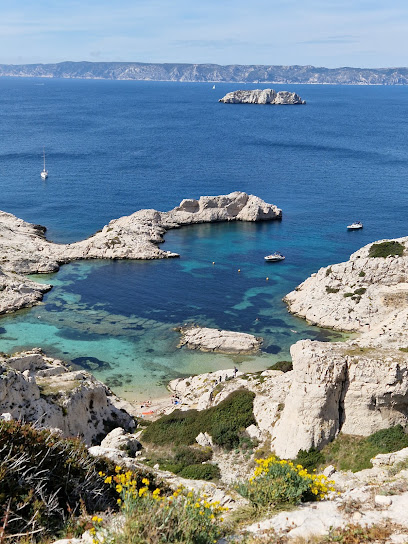
Fort de Ratonneau
Explore Fort de Ratonneau, a historic fortress on Île Ratonneau, offering stunning views and rich military history in the heart of Marseille.
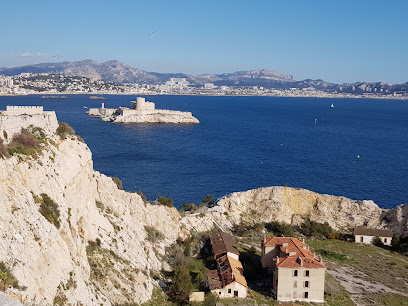
Visite des calanques - Les amis des Calanques
Discover the breathtaking beauty of the Calanques of La Ciotat, where stunning cliffs meet crystal-clear waters, perfect for adventure and relaxation.
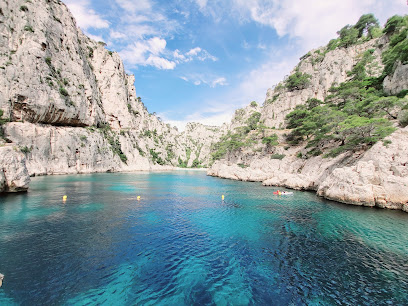
Les Calanques
Explore the stunning cliffs and crystal-clear waters of Les Calanques, a natural gem near Marseille, perfect for adventure and relaxation.
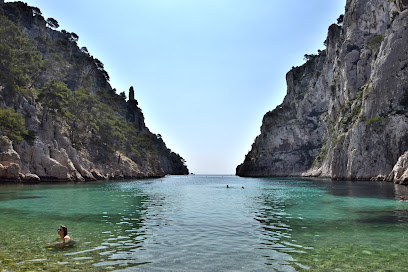
Essential places to dine
La Grotte
Discover La Grotte: A premier French and Mediterranean restaurant in Marseille known for its fresh seafood, artisan pizzas, and inviting ambiance.
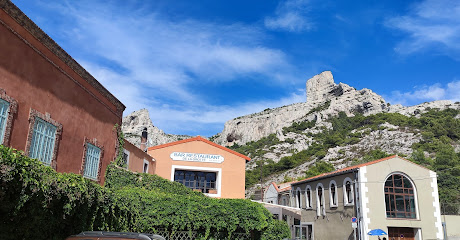
Chez Zé
Experience the best of Marseille's culinary delights at Chez Zé, where exquisite pizza meets Provençal charm.
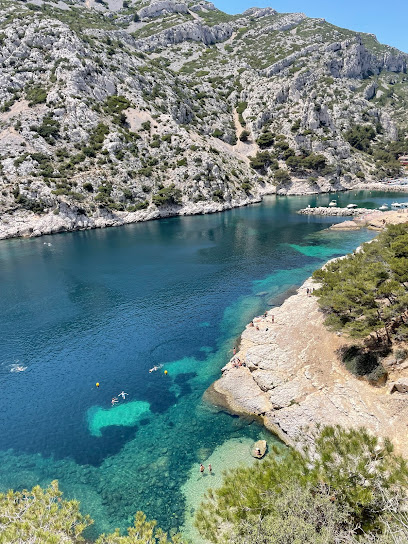
La Presqu'île
Discover La Presqu'île in Cassis: A sophisticated dining experience blending haute cuisine with stunning coastal views.
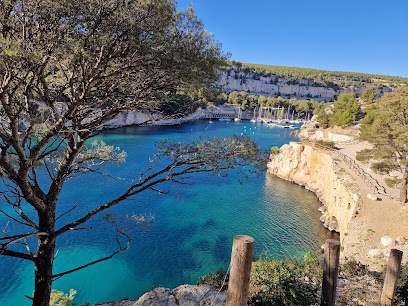
La Villa Madie
Discover La Villa Madie in Cassis - where exquisite French cuisine meets breathtaking Mediterranean views.
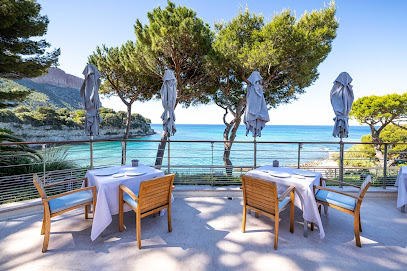
Chez Aldo
Discover culinary excellence at Chez Aldo, where fresh seafood meets Mediterranean charm in the heart of Marseille.
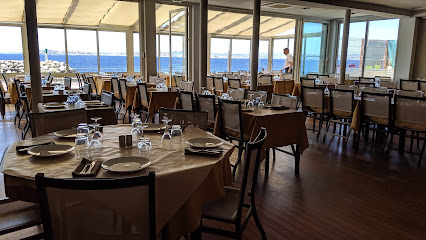
P.Kitchen restaurant bord de mer terrasse pointe rouge
Discover exquisite Thai-French fusion cuisine at P.Kitchen with breathtaking sea views in Marseille's charming coastal setting.
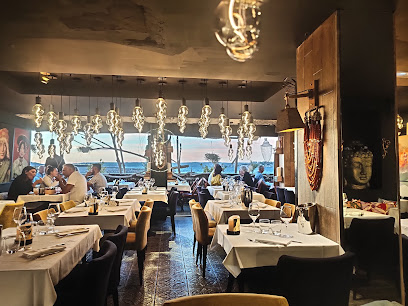
Restaurant La Baie des Singes
Experience exquisite French and Mediterranean cuisine with stunning coastal views at Restaurant La Baie des Singes in Marseille.
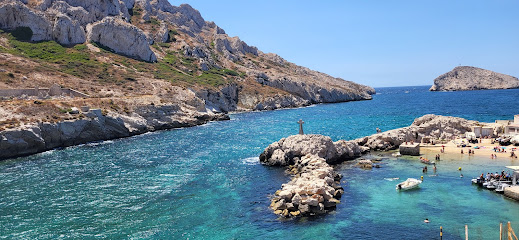
Tuba Club - Cabanons et Restaurant
Discover Tuba Club: A culinary haven in Marseille serving exquisite Mediterranean dishes with stunning views and a vibrant atmosphere.
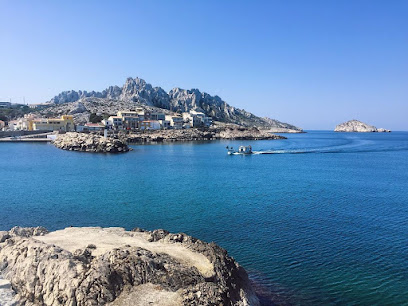
Le Lagon Bleu
Experience authentic French cuisine and delightful pizzas at Le Lagon Bleu in Marseille – a must-visit culinary destination!
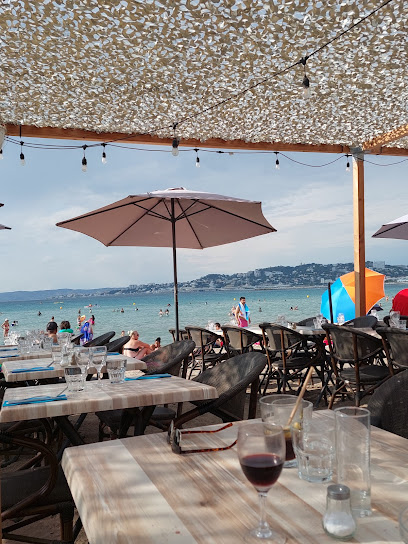
Sormiou Castle
Discover Sormiou Castle: A stunning restaurant offering fresh Mediterranean cuisine and breathtaking views in Marseille's beautiful calanques.
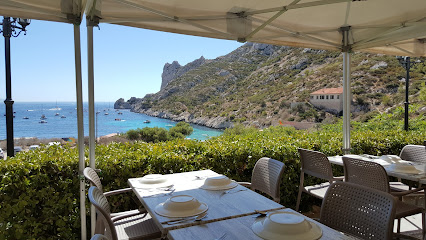
Le Bistrot de Nino
Experience authentic Mediterranean flavors at Le Bistrot de Nino in Cassis - where culinary artistry meets breathtaking views.
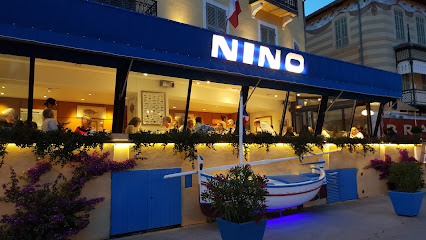
La Cantine De Lynn
Experience authentic French cuisine at La Cantine De Lynn in Marseille – where tradition meets innovation in every dish.
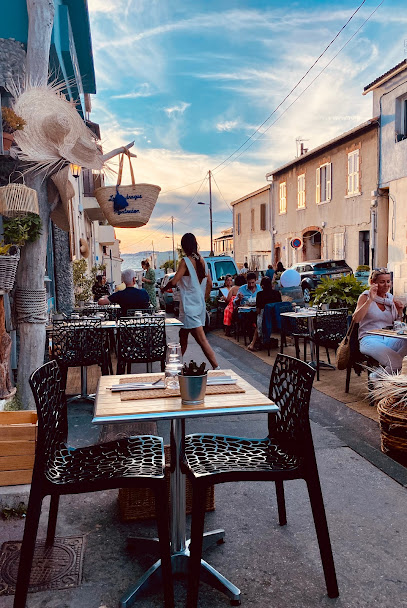
Auberge des Calanques
Experience exquisite barbecue delights at Auberge des Calanques in Ensuès-la-Redonne—where local flavors meet stunning coastal views.
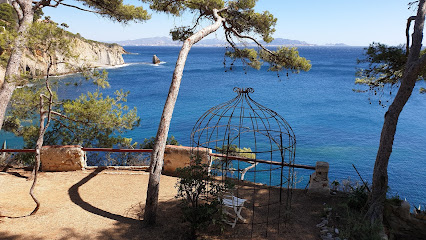
Question de Goût
Discover the exquisite flavors of French cuisine at Question de Goût in Marseille—where brunch meets fine dining in an elegant atmosphere.
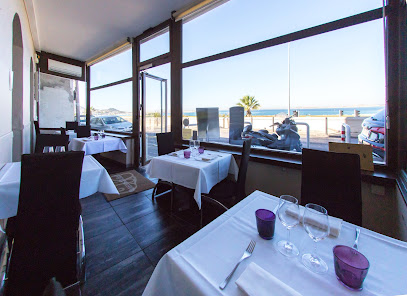
Bar Nautic Restaurant
Experience exquisite Mediterranean flavors at Bar Nautic Restaurant with stunning views in the heart of Marseille's Calanque Morgiou.
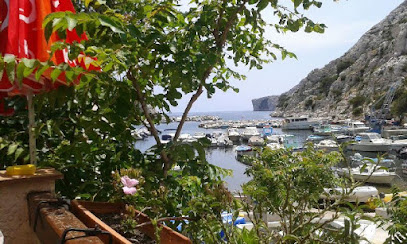
Markets, malls and hidden boutiques
Parc national des Calanques
Explore the breathtaking landscapes, hidden coves, and diverse wildlife of Parc National des Calanques near Marseille, France.
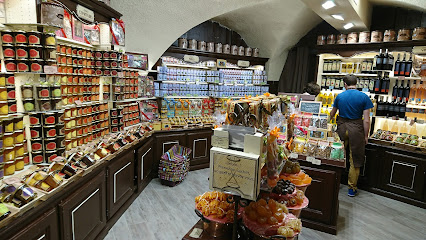
Prado Beach
Experience the vibrant atmosphere and stunning beauty of Prado Beach in Marseille, the perfect Mediterranean getaway for sun and fun.

Calanque de Port-Miou
Experience the breathtaking beauty of Calanque de Port-Miou, a stunning inlet in Cassis, France, perfect for hiking, swimming, and enjoying nature.
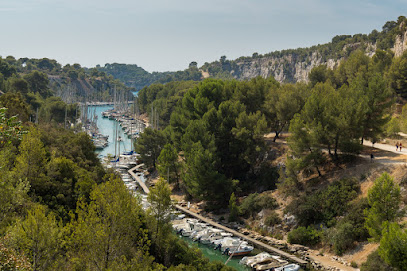
Parc du Mugel
Explore the enchanting Parc du Mugel, a botanical garden offering stunning views, hiking trails, and a serene escape into nature in La Ciotat.
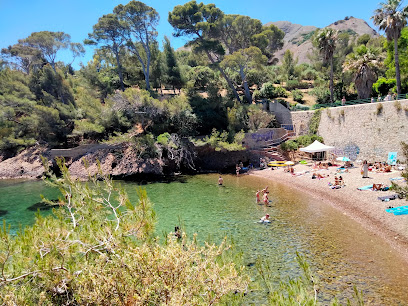
Le Panier Marseillais
Explore the artistic treasures of Le Panier Marseillais, where local crafts meet the rich history of Marseille in a vibrant shopping experience.
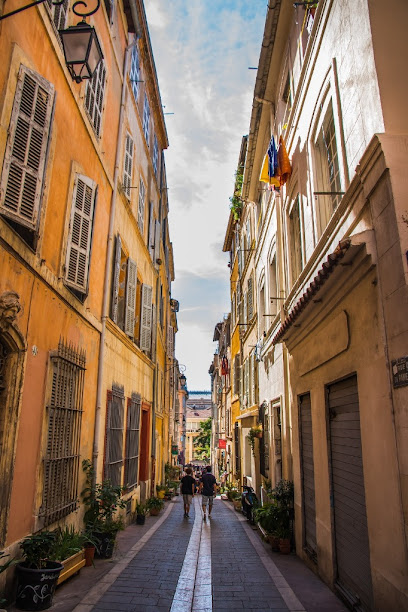
Camping Les Cigales
Experience the beauty of nature at Camping Les Cigales, your gateway to adventure in the stunning Cassis region of the French Riviera.

Marché de la Plaine
Explore the vibrant Marché de la Plaine, a cultural gem in Marseille offering fresh produce, local delicacies, and a taste of authentic Mediterranean life.
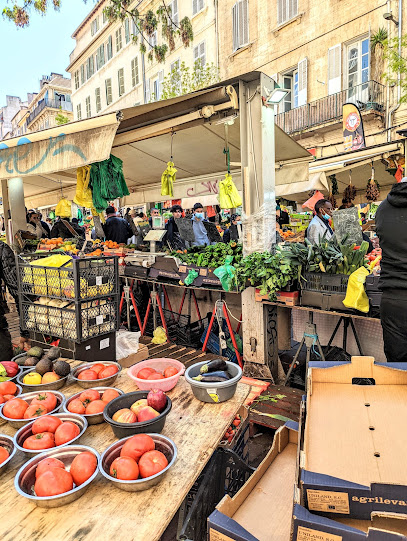
Port des Goudes
Explore the serene beauty of Port des Goudes, a picturesque marina in Marseille, perfect for seafood lovers and nature enthusiasts.
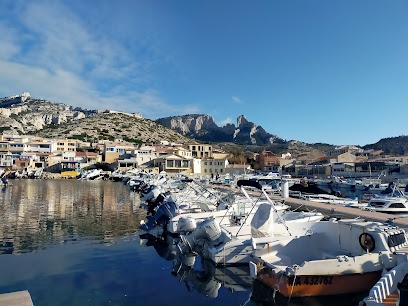
Office of Tourism & Conventions
Explore Marseille like a local with expert guidance and insider tips from the Office of Tourism & Conventions, your gateway to unforgettable experiences.
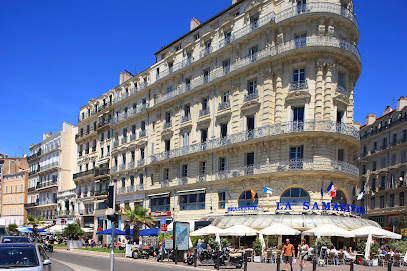
Belvédère de Sugiton
Experience the stunning vistas of the Mediterranean at Belvédère de Sugiton, a premier observation deck in the Calanques National Park.
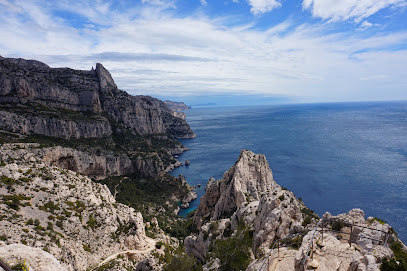
Massif des Calanques
Explore the majestic cliffs and turquoise waters of Massif des Calanques, a natural paradise offering breathtaking hikes and vibrant marine life.

Arkose Prado
Experience the thrill of rock climbing and the tranquility of Pilates at Arkose Prado, a unique venue in the heart of Marseille offering adventure and relaxation.

Citadines Apart'hotel Castellane Marseille
Experience the vibrant heart of Marseille at Citadines Apart'hotel Castellane, your perfect base for exploring the city’s rich culture and beautiful surroundings.

Grand Mugel Calanque
Experience the breathtaking beauty of Grand Mugel Calanque, a stunning public beach resort in France, ideal for relaxation and adventure.
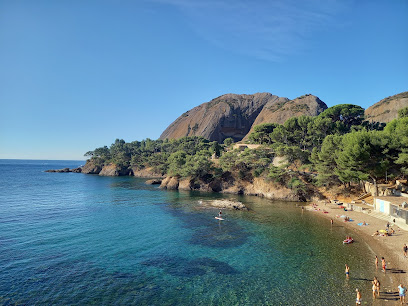
Camping Santa Gusta
Discover the perfect blend of relaxation and adventure at Camping Santa Gusta in La Ciotat, surrounded by nature's beauty and Mediterranean charm.

Essential bars & hidden hideouts
La Caravelle
Discover La Caravelle, a lively bar and restaurant in Marseille offering exquisite French cuisine, live music, and breathtaking views of the harbor.
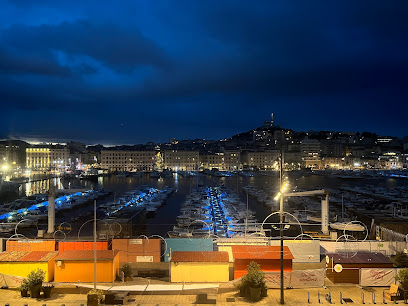
Bar de la Marine
Experience the vibrant flavors of Marseille at Bar de la Marine, where delicious pizzas and tapas meet stunning harbor views.
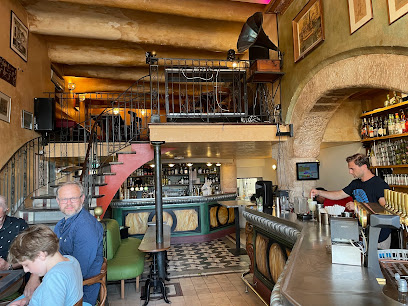
Carry Nation
Discover Carry Nation, Marseille's hidden cocktail bar offering exquisite drinks and an intimate ambiance for a unique night out.
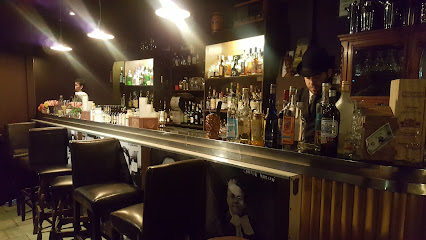
Sormiou Castle
Discover the culinary elegance of Sormiou Castle, where French and Mediterranean flavors meet stunning coastal views in Marseille.
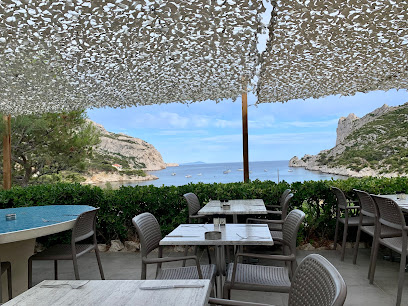
Bar De La Marine
Experience the charm of Cassis at Bar De La Marine, a French brasserie with stunning harbor views and delightful local cuisine.
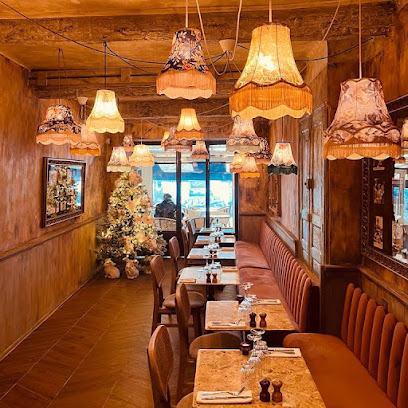
Bar Nautic Restaurant
Experience the breathtaking views and exquisite flavors of French and Mediterranean cuisine at Bar Nautic Restaurant in Marseille's Calanque Morgiou.
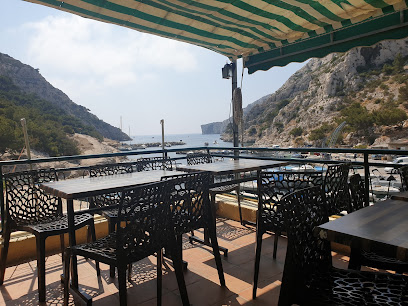
Best Western Hôtel La Rade
Discover the charm of Cassis at Best Western Hôtel La Rade, your perfect base for exploring the stunning French Riviera.
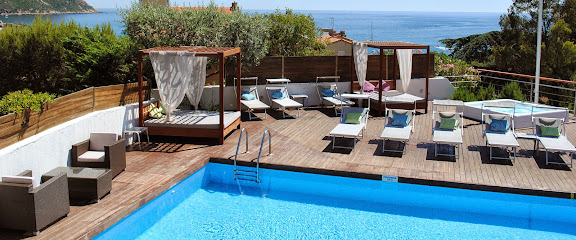
Le Dantès Skylounge
Discover the breathtaking views and exquisite cocktails at Le Dantès Skylounge, Marseille's premier rooftop bar overlooking the Mediterranean.
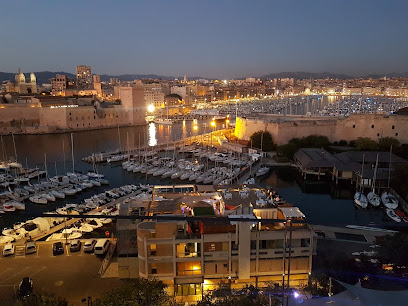
Snack des calanques
Indulge in the delectable ice cream, pizza, and sandwiches at Snack des Calanques in Cassis, a must-visit for food lovers and tourists alike.
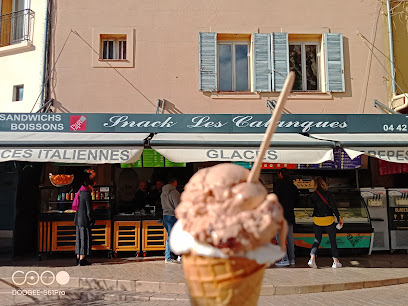
Bar Le France
Discover the flavors of Cassis at Bar Le France, where French cuisine meets stunning harbor views in a charming coastal setting.
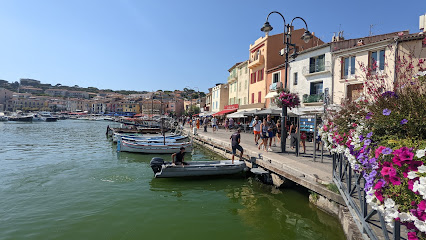
Brasserie Des Calanques
Experience authentic French cuisine at Brasserie Des Calanques, a charming bar and brasserie in the heart of Marseille, perfect for every foodie.
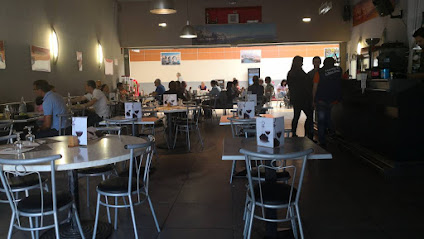
L’îlot de la Corniche
Explore the vibrant culinary scene at L’îlot de la Corniche, a tapas bar in Marseille offering delightful Mediterranean flavors and stunning coastal views.
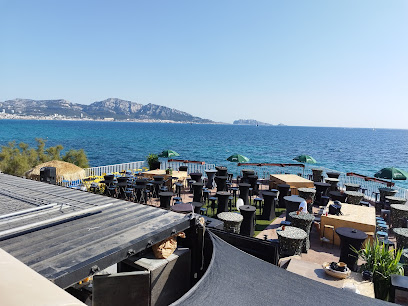
Ucpa Sormiou
Discover the thrill of outdoor sports in the breathtaking Calanques National Park at Ucpa Sormiou, where adventure and nature meet.

Les Caves Du Port
Experience the vibrant atmosphere and stunning views at Les Caves Du Port, the perfect bar in Cassis to unwind and enjoy local flavors.
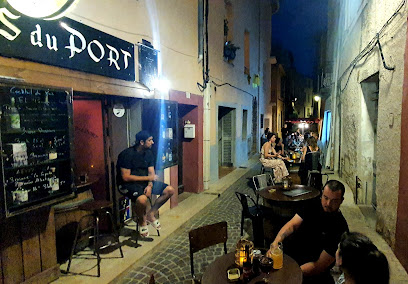
Bar the Capian
Experience the vibrant atmosphere and exquisite drinks at Bar the Capian, a must-visit bar in the heart of Marseille, perfect for tourists.
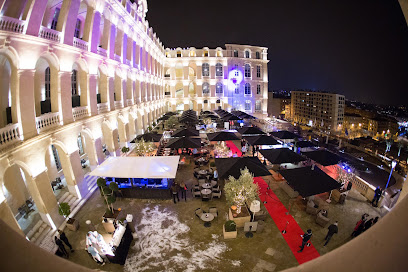
Local Phrases about Les Calanques National Park
-
- HelloBonjour
[bohn-zhoor] - GoodbyeAu revoir
[oh ruh-vwahr] - YesOui
[wee] - NoNon
[nohn] - Please/You're welcomeS'il vous plaît / De rien
[seel voo pleh / duh ryen] - Thank youMerci
[mehr-see] - Excuse me/SorryExcusez-moi / Désolé
[ex-kew-zay mwah / day-zoh-lay] - How are you?Comment ça va?
[koh-mohn sah vah] - Fine. And you?Bien. Et toi?
[byen. ay twah] - Do you speak English?Parlez-vous anglais?
[par-lay voo ahn-glay] - I don't understandJe ne comprends pas
[zhuh nuh kohm-prahnd pah]
- HelloBonjour
-
- I'd like to see the menu, pleaseJe voudrais voir le menu, s'il vous plaît
[zhuh voo-dray vwahr luh muh-noo, seel voo pleh] - I don't eat meatJe ne mange pas de viande
[zhuh nuh mahnzh pah duh vyand] - Cheers!Santé!
[sahn-tay] - I would like to pay, pleaseJe voudrais payer, s'il vous plaît
[zhuh voo-dray pay-ay, seel voo pleh]
- I'd like to see the menu, pleaseJe voudrais voir le menu, s'il vous plaît
-
- Help!Au secours!
[oh suh-koor] - Go away!Allez-vous-en!
[ah-lay voo zahn] - Call the Police!Appelez la police!
[ah-play lah poh-lees] - Call a doctor!Appelez un médecin!
[ah-play ahn mayd-sahn] - I'm lostJe suis perdu
[zhuh swee pair-doo] - I'm illJe suis malade
[zhuh swee mah-lahd]
- Help!Au secours!
-
- I'd like to buy...Je voudrais acheter...
[zhuh voo-dray zah-shay...] - I'm just lookingJe regarde juste
[zhuh ruh-gard zhewst] - How much is it?Combien ça coûte?
[kohm-byen sah koot] - That's too expensiveC'est trop cher
[say troh shair] - Can you lower the price?Pouvez-vous baisser le prix?
[poo-vay voo bay-say luh pree]
- I'd like to buy...Je voudrais acheter...
-
- What time is it?Quelle heure est-il?
[kel ur ay-teel] - It's one o'clockIl est une heure
[eel ay tewn ur] - Half past (10)Dix heures et demie
[dees ur ay deh-mee] - MorningMatin
[ma-tahn] - AfternoonAprès-midi
[ah-pray mee-dee] - EveningSoir
[swahr] - YesterdayHier
[yehr] - TodayAujourd'hui
[oh-zhoor-dwee] - TomorrowDemain
[duh-mahn] - 1Un
[uhn] - 2Deux
[duh] - 3Trois
[twah] - 4Quatre
[kat] - 5Cinq
[sank] - 6Six
[sees] - 7Sept
[set] - 8Huit
[weet] - 9Neuf
[nuf] - 10Dix
[dees]
- What time is it?Quelle heure est-il?
-
- Where's a/the...?Où est un/le...?
[oo ay uh/luh] - What's the address?Quelle est l'adresse?
[kel ay lah-dres] - Can you show me (on the map)?Pouvez-vous me montrer (sur la carte)?
[poo-vay voo muh mohn-tray (soor lah kart)] - When's the next (bus)?Quand est le prochain (bus)?
[kahnd ay luh proh-shen (boos)] - A ticket (to ....)Un billet (pour ....)
[uhn bee-yay (poor)]
- Where's a/the...?Où est un/le...?
History of Les Calanques National Park
-
Les Calanques, with its stunning limestone cliffs and azure waters, has been a point of attraction since ancient times. The Greeks and Romans frequented this area, with Marseille (Massalia) being one of the oldest cities in France, founded by Greek sailors around 600 BC. These ancient civilizations utilized the natural harbors and coastal features of Les Calanques for trade and settlement.
-
During the medieval period, the secluded coves and rugged cliffs of Les Calanques provided perfect hideouts for pirates and smugglers. These maritime bandits would use the natural geography to ambush merchant ships and evade capture, adding a layer of intrigue and danger to the region’s history.
-
Les Calanques played a strategic role during World War II. The German army occupied Marseille and its surroundings, including the Calanques, to control the Mediterranean coast. The area’s challenging terrain was both a hindrance and a defense, with resistance fighters using the cliffs and caves to stage guerrilla operations against the occupying forces.
-
Les Calanques National Park was officially established in 2012, making it one of the newest national parks in France. Its creation was a significant environmental milestone, aimed at protecting the unique biodiversity, geological formations, and cultural heritage of the area. The park covers both terrestrial and marine environments, ensuring comprehensive conservation efforts.
-
The breathtaking scenery of Les Calanques has inspired numerous artists, writers, and filmmakers. The striking landscapes have been depicted in various forms of art and literature, contributing to the cultural richness of the region. Notable figures like the painter Paul Cézanne and the writer Marcel Pagnol have drawn inspiration from the natural beauty of Les Calanques.
Les Calanques National Park Essentials
-
Les Calanques National Park is located in the Provence-Alpes-Côte d'Azur region of southern France, between Marseille and Cassis. The nearest airport is Marseille Provence Airport, approximately 30 kilometers away. From the airport, you can take a shuttle bus or a taxi to Marseille's Saint-Charles train station. From there, you can take a bus or a train to reach Cassis or other entry points to the park. Alternatively, you can drive to Les Calanques from Marseille or Cassis.
-
Within Les Calanques National Park, the best way to explore is on foot or by boat, as many areas are inaccessible by car. Public buses connect Marseille and Cassis, and there are shuttle services that can take you to popular starting points for hiking. Taxis and car rentals are available in Marseille and Cassis, but parking can be limited near the park's entrance points, especially during peak season. Boat tours are also a popular option and provide a unique perspective of the park's stunning coastline.
-
The official currency in France is the Euro (EUR). Credit and debit cards are widely accepted in hotels, restaurants, and shops. However, it is advisable to carry some cash for smaller establishments, local markets, or in case of emergencies. ATMs are available in Marseille and Cassis, so you can easily withdraw cash if needed.
-
Les Calanques National Park is generally a safe destination for tourists. However, it is important to take standard precautions, such as avoiding isolated areas after dark and keeping an eye on your belongings in crowded places. Marseille has some neighborhoods with higher crime rates, such as the northern districts, where tourists should exercise increased caution. Always lock your vehicle and avoid leaving valuables in plain sight.
-
In case of emergency, dial 112 for immediate assistance, which is the EU-wide emergency number. There are hospitals and medical facilities in Marseille and Cassis. It is recommended to have travel insurance that covers medical emergencies and outdoor activities. For minor health issues, there are pharmacies in Marseille and Cassis where you can purchase over-the-counter medications.
-
Fashion: Do wear comfortable hiking shoes and outdoor gear suitable for varying weather conditions. Avoid wearing flip-flops or sandals on rugged trails. Religion: While the park itself does not have religious sites, do respect the local customs and traditions when visiting nearby towns. Public Transport: Do validate your bus or train ticket before boarding. Don't forget that eating and drinking on public transport is generally discouraged. Greetings: Do greet people with a polite 'Bonjour' and a handshake. Don't be overly informal or use first names immediately. Eating & Drinking: Do try local Provençal cuisine and seafood delicacies. Don't forget to make reservations at popular restaurants, especially during peak season.
-
To experience Les Calanques National Park like a local, visit during the shoulder seasons (spring and fall) to avoid the summer crowds and enjoy milder weather. Pack a picnic and take advantage of the designated picnic spots along the trails. Engage with local guides who can provide insights into the park's history, geology, and biodiversity. Don't miss out on the local markets in Marseille and Cassis, where you can buy fresh produce, local crafts, and souvenirs.
Trending Landmarks in Les Calanques National Park
Nearby Cities to Les Calanques National Park
-
Things To Do in Aix-en-Provence
-
Things To Do in Avignon
-
Things To Do in Saint-Tropez
-
Things To Do in Nîmes
-
Things To Do in Cannes
-
Things To Do in Montpellier
-
Things To Do in Nice
-
Things To Do in Fontvieille
-
Things To Do in Les Moneghetti
-
Things To Do in Moneghetti
-
Things To Do in La Condamine
-
Things To Do in Monaco-Ville
-
Things To Do in Monte Carlo
-
Things To Do in Larvotto
-
Things To Do in Saint Roman

